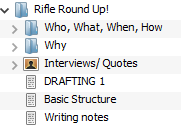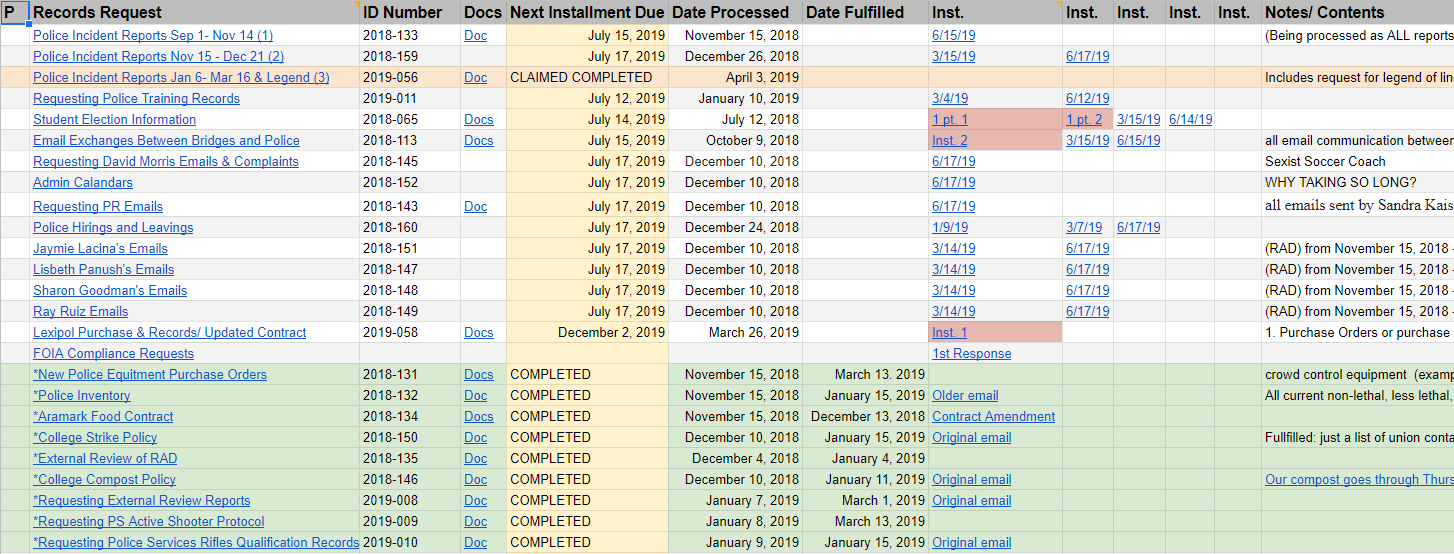This is an overview of a writing and reporting process I used to use. I left it up in case any nerds want to see how I've evolved and experimented with different tools.
Writing complex news articles can be overwhelming. To tell the cleanest and most efficient story possible it's key to have a good process from start to finish. I'm constantly revising and building my own process for reporting and writing.
Currently, I use Scrivener to organize and draft information into potential stories. I use google sheets to manage my public records requests. I use otter.io to transcribe and manage my interviews and quotes. I use the Hemingway and ProWritingAid editors, warily.
Below are some examples from my "Evergreen beat" scrivener doc and my public records tracking doc to give you a sense of how I work.





